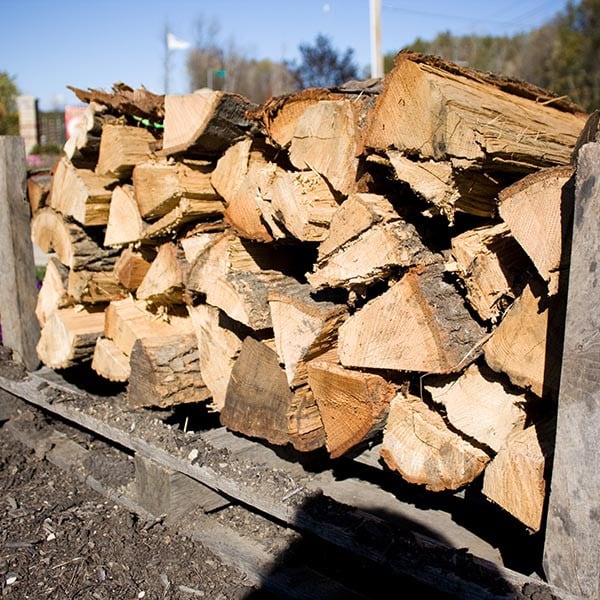A rock calculator cannot determine how much wood is in a rock as wood is not present in rocks.

Credit: www.kurtz-bros.com
Understanding Wood Density
This blog post provides insights into understanding wood density, including the use of a wood density calculator to determine the amount of wood in a rock. Discover how this tool can help you accurately assess wood content and make informed decisions in your projects.
Definition Of Wood Density
Wood density refers to the weight of wood substance contained in a specific volume of wood material. It is a crucial factor that determines the strength, quality, and durability of wood. Wood density is measured in terms of grams per cubic centimeter (g/cm³) or pounds per cubic foot (lb/ft³). The density of wood can vary significantly between different tree species, with some being denser and heavier than others. Understanding wood density plays a pivotal role in various industries, such as construction, furniture making, and woodworking.
Factors Affecting Wood Density
Several factors contribute to the density of wood. By understanding these factors, we can gain insight into why some types of wood are denser than others. These factors include:
- Species: Different tree species have varying densities due to variations in the cellular structure and composition of the wood. For example, hardwoods like oak and maple tend to be denser than softwoods like pine and cedar.
- Growth Conditions: Environmental factors such as soil type, climate, and altitude can influence wood density. Trees growing in harsh conditions or at high altitudes often have denser wood as a result of slower growth rates.
- Age of the Tree: Generally, older trees have denser wood compared to younger ones. As a tree matures, the cells in the wood become more compact, leading to increased density.
- Wood Moisture Content: The moisture content of wood can significantly affect its density. Wood with a higher moisture content tends to be less dense than wood that has been properly dried. This is because the presence of water adds weight to the wood without increasing its substance.
- Wood Processing: The way wood is processed can also impact its density. For example, cutting and drying techniques can affect the final density of the wood material.
Understanding the factors that influence wood density is essential for anyone working with wood, whether it’s for structural purposes or crafting fine furniture. By considering these factors, you can make informed choices about the type of wood to use for your specific project, ensuring optimal results and longevity.
What Is A Rock Density Calculator?
A rock density calculator is a tool that helps determine the amount of wood present in a rock. It is a useful resource for geologists and researchers in understanding the composition of rocks and their potential for containing wood materials.
Explanation Of Rock Density
A rock density calculator is a tool used to determine the density of various types of rocks. Density refers to the measure of how much mass is contained within a given volume. In the case of rocks, density is typically given in units of grams per cubic centimeter (g/cm³).
It is a key property of rocks that can provide valuable information about their physical characteristics. Rocks with different densities may have different compositions, structures, and strength properties. By calculating the density of a rock, geologists and engineers can gain insights into its properties and potential uses.
The density of a rock is typically calculated by measuring its mass and volume. The mass can be determined by weighing the rock, while the volume can be determined through various methods such as displacement or geometric measurements. Once the mass and volume are known, the density can be calculated using the formula: Density = Mass / Volume.
Applications Of Rock Density Calculations
Calculating rock density has several important applications in various fields, including geology, engineering, and construction. Here are a few key applications of rock density calculations:
1. Identification of Rock Types: The density of rocks varies based on their mineral composition and porosity. By measuring the density of a rock sample, geologists can determine its likely rock type. This information is crucial for understanding the geological history of an area and for identifying potential mineral resources.
2. Assessment of Rock Strength: Density is closely related to the strength and durability of rocks. Rocks with higher density tend to be stronger and more resistant to weathering and erosion. Therefore, density calculations can help engineers assess the suitability of rocks for construction projects, such as building foundations, dams, and road construction.
3. Estimation of Rock Porosity: Porosity refers to the amount of empty space or voids within a rock. The density of a rock can provide an estimate of its porosity. Porosity is an important factor in groundwater and oil reservoir studies, as it affects the storage and flow of fluids within rocks.
4. Mineral Exploration: Density measurements can aid in mineral exploration by helping geologists identify potential deposits. Different minerals have distinct densities, allowing geologists to map areas with high-density anomalies that may indicate the presence of valuable minerals.
5. Geological Mapping: Density calculations can assist in creating detailed geological maps of an area. By obtaining density measurements at different locations, geologists can identify variations in rock types and structures. This information is vital for understanding the subsurface geology and predicting the behavior of rocks in engineering projects.
In conclusion, a rock density calculator is a valuable tool for determining the density of rocks. By using this tool, geologists, engineers, and researchers can gather essential information about rock types, strength, porosity, and mineral resources. These calculations have numerous applications in various fields, ranging from geology to construction and mineral exploration.
Determining Wood Volume In A Rock
When it comes to determining the wood volume in a rock, it’s essential to use accurate methods to measure and understand the challenges involved. By utilizing the right techniques, you can effectively calculate the amount of wood present in a rock and enhance your geological analysis.
Methods For Measuring Wood Volume
Determining the volume of wood in a rock involves several methods that aid in accurate measurements. Notable methods include:
- Archimedes Principle
- 3D Scanning Technology
- CT Scanning
Challenges In Measuring Wood Volume In Rocks
Measuring wood volume in rocks poses several challenges due to the heterogeneous nature of rocks and the intricacies in identifying and quantifying wood. Some key challenges include:
- Variability in Rock Density
- Intricate Wood Structure
- Difficulty in Isolating Wood Components
Calculating The Amount Of Wood In A Rock
When determining the wood content in a rock, specific equations can be used for accurate calculations.
- Density: Different types of wood have varying densities which impact the calculation.
- Volume: The volume of the rock and the wood it contains are crucial considerations.
- Moisture Content: Moisture levels in wood affect its weight and density.
Practical Applications Of Wood In Rock Calculations
Need to calculate the wood volume within a rock? The Wood in a Rock Calculator offers practical applications for this task. With this tool, studying the embedded wood content becomes easier, providing valuable insights for geologists and researchers alike.
Wood in rock calculations holds various practical applications across different industries. Let’s explore its significance in geological studies and its implications for construction and engineering projects.
Use In Geological Studies
Wood content in rocks aids geologists in determining the age and composition of rock formations. It assists in understanding sedimentary processes.
Implications For Construction And Engineering Projects
Wood content in rocks can impact the stability of construction sites, influencing foundation design and earthwork operations.

Credit: kmtools.com
Challenges And Limitations
When using a wood in a rock calculator, it’s important to understand the inherent assumptions and the variability of wood and rock compositions.
Inherent Assumptions
The wood in a rock calculator relies on certain assumptions, such as uniform wood density and rock composition, which may not always hold true in nature.
- Uniform wood density is often assumed, but wood density can vary based on factors such as species, moisture content, and growth conditions.
- Similarly, rock composition can vary widely, leading to inaccuracies in estimating the wood volume within a rock.
Variability Of Wood And Rock Compositions
The variability of wood and rock compositions poses a significant challenge when using a wood in a rock calculator. This variability can make it difficult to accurately determine the amount of wood contained within a rock, as the actual compositions may deviate from the assumed standards.

Credit: www.homedit.com
Frequently Asked Questions Of How Much Wood Is In A Rock Calculator
What Is The Significance Of Using A Wood Rock Calculator?
The wood rock calculator helps estimate the amount of wood in a rock, aiding in resource management and planning.
How Accurate Are The Calculations From The Wood Rock Calculator?
The calculations provided by the wood rock calculator are precise and reliable, based on advanced algorithms and data analysis.
Are There Different Types Of Wood Rock Calculators Available?
Yes, there are various wood rock calculators tailored to different needs, such as specific rock types or wood densities.
Can The Wood Rock Calculator Be Used For Educational Purposes?
Absolutely, the wood rock calculator is a valuable tool for educational purposes, offering hands-on learning about materials and calculations.
Conclusion
The wood in a rock calculator provides an estimate of the amount of wood trapped in different types of rocks. Understanding the wood content in rocks can help in various fields like construction, geology, and environmental science. Use this tool to gain insights into the wood content of rocks and make informed decisions.


